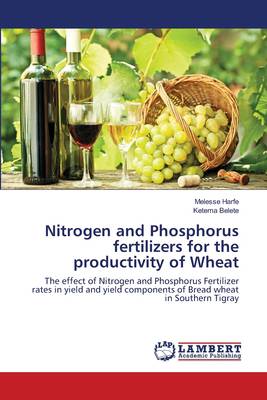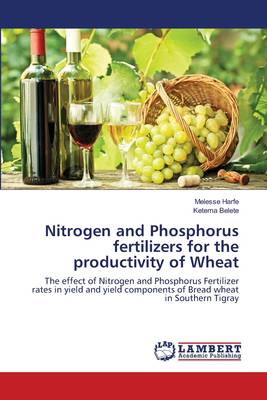
- Afhalen na 1 uur in een winkel met voorraad
- Gratis thuislevering in België vanaf € 30
- Ruim aanbod met 7 miljoen producten
- Afhalen na 1 uur in een winkel met voorraad
- Gratis thuislevering in België vanaf € 30
- Ruim aanbod met 7 miljoen producten
Zoeken
Nitrogen and Phosphorus fertilizers for the productivity of Wheat
The effect of Nitrogen and Phosphorus Fertilizer rates in yield and yield components of Bread wheat in Southern Tigray
Melesse Harfe, Ketema Belete
Paperback | Engels
€ 47,95
+ 95 punten
Omschrijving
The book explains result of a research conducted in 2006 cropping season in Ofla district in southern Tigray (Ethiopia) in research station supported by laboratory. The aim of the research was to see the effect of nitrogen and phosphorus fertilizer rates on the yield and yield components of bread wheat (Triticum aestivum L.). Application of N and P fertilizers significantly (P<0.01) influenced plant height, shoot dry weight at physiological maturity, and tiller number per plant. The variety-P-N interactions were highly significant for grain yield, biomass yield, harvest index, and straw yield. Non-significance difference due to the interaction of P and N with respect to plant height, number of tillers per plant, initial plant stand, 1000 kernels weight ,days to 50% flowering and total soil nitrogen at harvest was observed. The grain and straw N and P contents and uptakes, increased with N and P levels but the apparent recovery and agronomic efficiency of N and P fertilizers decreased with increasing N and P rates in both varieties. In addition grain and biomass yields were significantly and positively correlated with most of the agronomic parameters.
Specificaties
Betrokkenen
- Auteur(s):
- Uitgeverij:
Inhoud
- Aantal bladzijden:
- 68
- Taal:
- Engels
Eigenschappen
- Productcode (EAN):
- 9783659411335
- Verschijningsdatum:
- 19/06/2013
- Uitvoering:
- Paperback
- Afmetingen:
- 150 mm x 220 mm
- Gewicht:
- 113 g

Alleen bij Standaard Boekhandel
+ 95 punten op je klantenkaart van Standaard Boekhandel
Beoordelingen
We publiceren alleen reviews die voldoen aan de voorwaarden voor reviews. Bekijk onze voorwaarden voor reviews.








